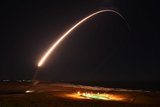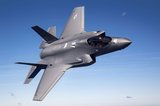NATO releases report on defence spending 2012-2019
NATO has released its defence spending figures for the period between 2012 and 2019 and it will make unhappy reading for some, including the Trump Administration.
In 2019 only seven members of the alliance are estimated to have met the NATO objective of spending two percent of GDP on defence. These include the US, Greece, Estonia, the UK, Romania, Poland and Latvia.
Although there has been an effort by other major nations to increase their defence spending, the likes of France, Germany, Italy and Spain all continue to fall below the threshold.
The organisation routinely collects information pertaining to defence expenses from its members and allies. Each Ministry of Defence reports current and estimated defence spending, with amounts representing payments actually made, or to be made, by a national government during the fiscal year to meet the needs of the Allies or Alliance armed forces.
In addition, economic and demographic information from the Directorate General for Economic and Financial Affairs of the European Commission (DG-ECFIN) and the Organisation for Economic Co-operation and Development (OECD) is used.
The report goes on to advise that due to the difference between the sources and national GDP forecasts, as well as the definition of NATO defence expenditure as opposed to national definitions, the figures shown in the report have the potential to vary considerably from figures quoted by the media, national authorities, or national budgets.
More from Defence Notes
-
![Canada set to look away from its neighbour and across the Atlantic for partners]()
Canada set to look away from its neighbour and across the Atlantic for partners
While non-EU UK struggles to join the Security Action for Europe initiative, which provides loans for defence programmes, Canada has become the first country outside Europe to get access – and did so for a nominal fee.
-
![NATO experiments with solutions to integrate networks, AI and uncrewed systems]()
NATO experiments with solutions to integrate networks, AI and uncrewed systems
During the latest edition of the NATO DiBaX, the alliance tested multiple capabilities to inform requirements for future efforts.
-
![Leonardo unveils plans for Michelangelo air defence dome]()
Leonardo unveils plans for Michelangelo air defence dome
The new multi-layered defence system will harness AI to neutralise airborne threats and protect Europe from Russian aggression.























